Best & Worst Diets for Climate Change
Even with climate change well underway around the planet, there are still things that we can do in terms of food choices that can have an impact. Learn the best and worst diets for climate change, plus nutrition changes you can make to help the environment.

There is no doubt that humans have a significant negative impact on the environment, and that farming and agricultural practices have contributed to climate change.
Before we review how we can eat to support the environment, let’s review the worst diets for climate change.
Worst Diets for Climate Change
The following ways of eating are by far the worst for both the environment and for human health.
This is due to a variety of factors including ultra-processed foods, excess packaging, food waste, and the severe negative impact on human health.
1. Standard American Diet (SAD)
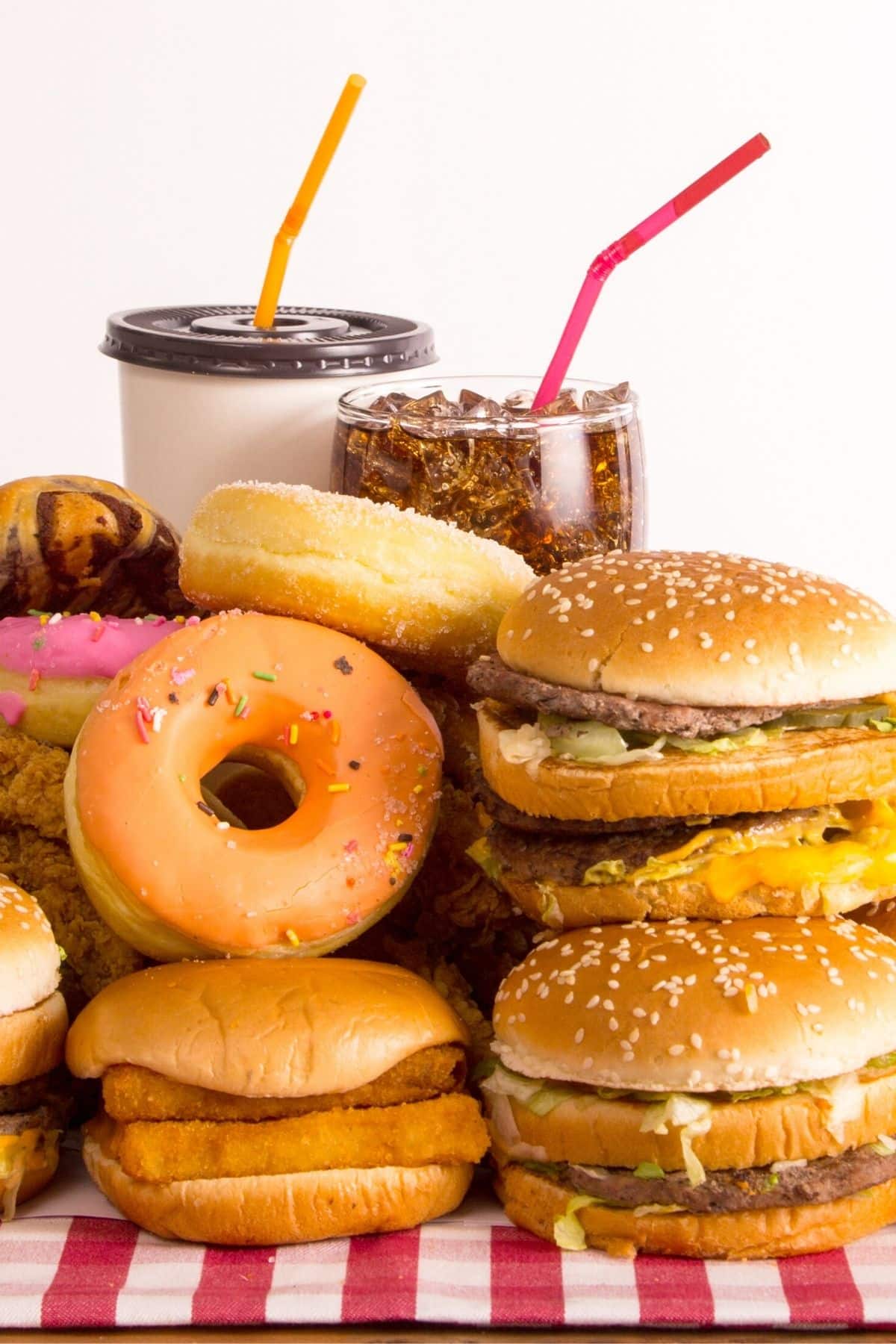
What it is
SAD is – unfortunately – a very appropriate acronym for the diet that most Americans enjoy on a daily basis. It is also known as the Western Pattern Diet as many people from other countries outside the United States consume this type of diet.
Whereas a “poor diet” once referred to a lack of food, these days it tends to be associated with an excess of calories. To make matters worse, those calories come from unhealthy sources.
Typically, the SAD diet contains lots of processed foods, processed meats, refined grains, sugary beverages and treats, and fried foods. These are typically high in:
- saturated fats
- trans fats
- refined sugar
- salt
- refined carbohydrates (like white flour)
Impact on human health
Very few foods in the SAD diet are plant-based or nutrient-rich. The result is that many Americans are low in essential nutrients like fiber, vitamin D, potassium, and calcium.
The effects of this eating pattern on the health of the Northern American population have been catastrophic. Levels of obesity continue to soar and the “diseases of civilization” – including cardiovascular disease (CVD), high blood pressure, certain kinds of cancer, and type 2 diabetes – are very common.
Impact on the environment
While harmful on a personal level, this increasingly widespread poor health in Western nations is also leading to an increase in greenhouse gas emissions by the health care system.
These contributions to carbon emissions come from several sources, including energy consumption, the manufacture and disposal of medical products, and transportation.
Reports on the crisis have suggested that health care emissions from the US have reached an estimated 9.8% of the national total. That figure represents 655 million metric tons of carbon dioxide equivalent (CO2e).
The prevalence of red meat consumption in the SAD diet is also strongly linked to climate change.
Experts say that around half of all the ice-free and desert-free land in the world is used by agriculture and that the majority of that is taken up with either livestock grazing or the production of livestock feed. As well as requiring enormous amounts of land, raising animals for food also involves massive energy and water consumption.
It also causes pollution on an epic scale.
Figures from the Environmental Protection Agency show that animals on U.S. factory farms annually produce around 500 million tons of manure. There are no facilities to process animal sewage. This means it is either sprayed over fields – contributing to air pollution – or stored in huge waste lagoons. The runoff from these, along with pastures and croplands, often ends up in our rivers and lakes.
Many experts agree that beef is the biggest problem.
Just one cow can produce around 220 pounds of methane a year. Considering the sheer number of cows reared to feed the world’s population, this has a considerable impact on global warming – indeed, cattle are said to be the main agricultural source of greenhouse gases worldwide.
How to make a difference
Taking steps to switch from a SAD diet could make a big impact on these figures.
And while the biggest changes will bring about the biggest improvements, even making small tweaks to your diet can help.
Studies have shown that adopting a healthier diet could cut the risk of coronary heart disease, colorectal cancer, and type 2 diabetes by 20–45%.
A reduction on this scale could cut the costs of the United States health care system by up to $93 billion dollars a year and reduce the emission of greenhouse gases by 222–826 kg CO2e (carbon dioxide equivalent).
This huge reduction in emissions would in part come from fewer demands on the health care system, but primarily from improvements in the food production system.
The good news is that these figures were not based on the results of massive dietary changes, that some people might find difficult to maintain.
Instead, the researchers looked at the average daily calorie consumption of 2,000 calories. They then changed the sources of just half of them. Some model diets cut back on red meat consumption but didn’t eliminate it altogether. Intake of fruit and vegetables was doubled, but added sugar was not reduced at all. And refined grains were only partially replaced with whole grains.
This means that the projected figures are actually quite conservative – and that if healthier diets were more widely accepted, the benefits to our health and environment could be even bigger.
It also means that any dietary changes that focus on eating better – even small ones – are a step in the right direction.
2. Fast Foods
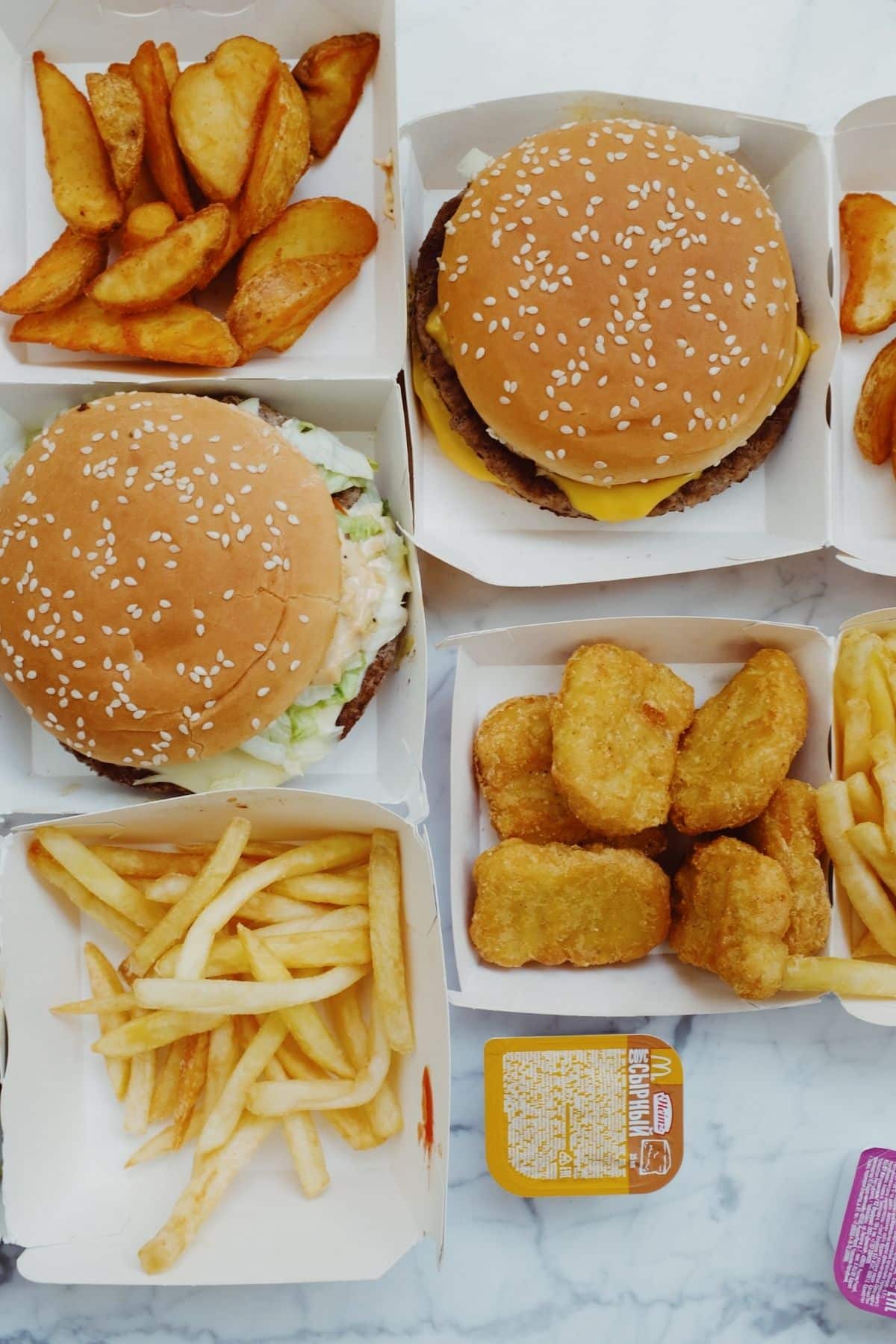
The damage that fast foods do to our health is well recognized and well documented.
And while the impact on our health system is similar to that of the SAD diet, the fast-food industry has played an enormous contribution to climate change in other ways too.
Fast foods and the environment
Along with the excessive use of land and production of agricultural emissions, the industry’s reliance on single-use packaging has led to a great deal of waste.
Many containers for take-out food are made of non-recyclable containers and we now have the nightmare scenario where landfill sites are filled with Styrofoam, where it can take anywhere from 500 years upwards to decompose.
How to make a difference
Steps are being made to rectify the mistakes of the past and environmentally conscious fast-food companies are making an effort to switch to more sustainable materials for their packaging.
While those are good things, it will take a long time to see the types of changes that our planet really needs. And for that reason, we need to do what we can on a personal level and limit our consumption of these foods as much as possible.
Best Diets for Climate Change
1. Plant Based Diets

Plant-based diets focus on foods primarily derived from plants. These include fruits, vegetables, whole grains, nuts, seeds, and legumes.
If you choose to follow a plant-based diet, it doesn’t mean that you can never eat meat or consume animal products like milk and eggs. It just means that the majority of your food comes from plant sources.
This is a little different from veganism and vegetarianism.
The vegan diet is wholly plant-based, with no foods whatsoever that come from animal products (including eggs and dairy).
Vegetarians do not eat meat, poultry, fish, or shellfish, but may eat animal products that do not come from animal slaughter (such as dairy).
All three of these diets (plant-based, vegan, and vegetarian) can help prevent the destruction of the environment associated with climate change. Learn more about vegan versus vegetarian diets.
By reducing or eliminating meat consumption, vegan, vegetarian, and plant-based diets help lower the impacts of livestock farming on the planet.
Veganism arguably has the most significant effect because it also eliminates dairy. Avoiding both meat and dairy are said to be the single biggest contribution we can make as individuals to reduce our environmental impact.
Of course, land would still be required to grow the crops needed to feed the population. And even some manufacturers of vegan and vegetarian products are guilty of using unsustainable materials for their packaging.
But the impact from food crops is undoubtedly far less than that from the rearing of livestock.
And, if we ensure that any plant-based, vegan, or vegetarian items we consume are responsibly produced – with a minimum of packaging, then the advantages of these types of diets in terms of climate change are clear.
Why you don’t have to go vegan
If vegan diets are so good for the environment, you might be wondering why everyone doesn’t go vegan?
The problem is that humans are omnivores and we are designed to eat animal products.
While a small percentage of people can thrive on a diet with no animal products, most people encounter health problems on a vegan diet. Read more about the myths of a vegan diet, including that it can fix all health problems.
So, it’s impossible to hope or plan for the human species to give up on eating animal products.
The best we can hope for is that people consider reducing their consumption and give more thought to purchasing more sustainable sources of animal products, including grass-fed, pasture-raised, wild-caught, etc.
Lastly, you might be wondering about the increase in “fake meats” that are marketed as healthier alternatives to eating real meat?
The problem with fake meats is that they are often filled with chemicals and other highly processed ingredients. For this reasons and others, fake meat made from fake ingredients are not considered healthier or better of the planet.
Learn more about the reasons to avoid fake meats.
2. Real Food Diets

Paleo, real food, and clean eating diets focus on consuming foods that are whole or minimally processed.
The emphasis of the paleo diet is to stick to the types of foods that would have been typically eaten during the Paleolithic era, around 2.5 million to 10,000 years ago. These are the kinds of foods that early humans would have hunted or gathered. Indeed, the premise of the diet is to return to that way of eating, casting aside the modern diet that farming practices have produced.
Real food and clean eating diets including Whole30 are somewhat similar, in that both diets cut out processed foods and too many added sugars. And, all promote the consumption of sustainably-produced meat, wild-caught seafood, quality eggs from pasture-raised chickens, and organic fruits, and vegetables.
All of these approaches offer health benefits because they encourage whole, healthy foods and avoid junk foods that are high in sugars, fats, and salt.
How eating healthy helps slow climate change
They also offer benefits in terms of protecting the environment.
Because people who follow these diets tend to be relatively healthy, they are less likely to become a drain on the health care system over time.
And while the emphasis may be on eating meat, these diets focus on the consumption of high-quality, grass-fed meat. Grass-fed meat is considered to be better for the environment than conventionally reared livestock.
Because the animals are regularly moved to fresh pasture and kept away from streambeds, they spread their manure evenly. This helps increase the quantity and quality of vegetation, which in turn conserves soil, reduces erosion, and preserves wildlife in the region.
What’s more, the paleo diet promotes organic methods in farming, which prevent water contamination from pesticides and fertilizer. Organic farming also includes rotational grazing, which helps soils conserve water, and enhances the earth’s resistance to weeds and pests without using chemicals.
Learn more about the differences between paleo, keto, and clean eating diets.
You may also be interested in one of my favorite sustainable protein options: cricket protein!
3. Mediterranean Diet
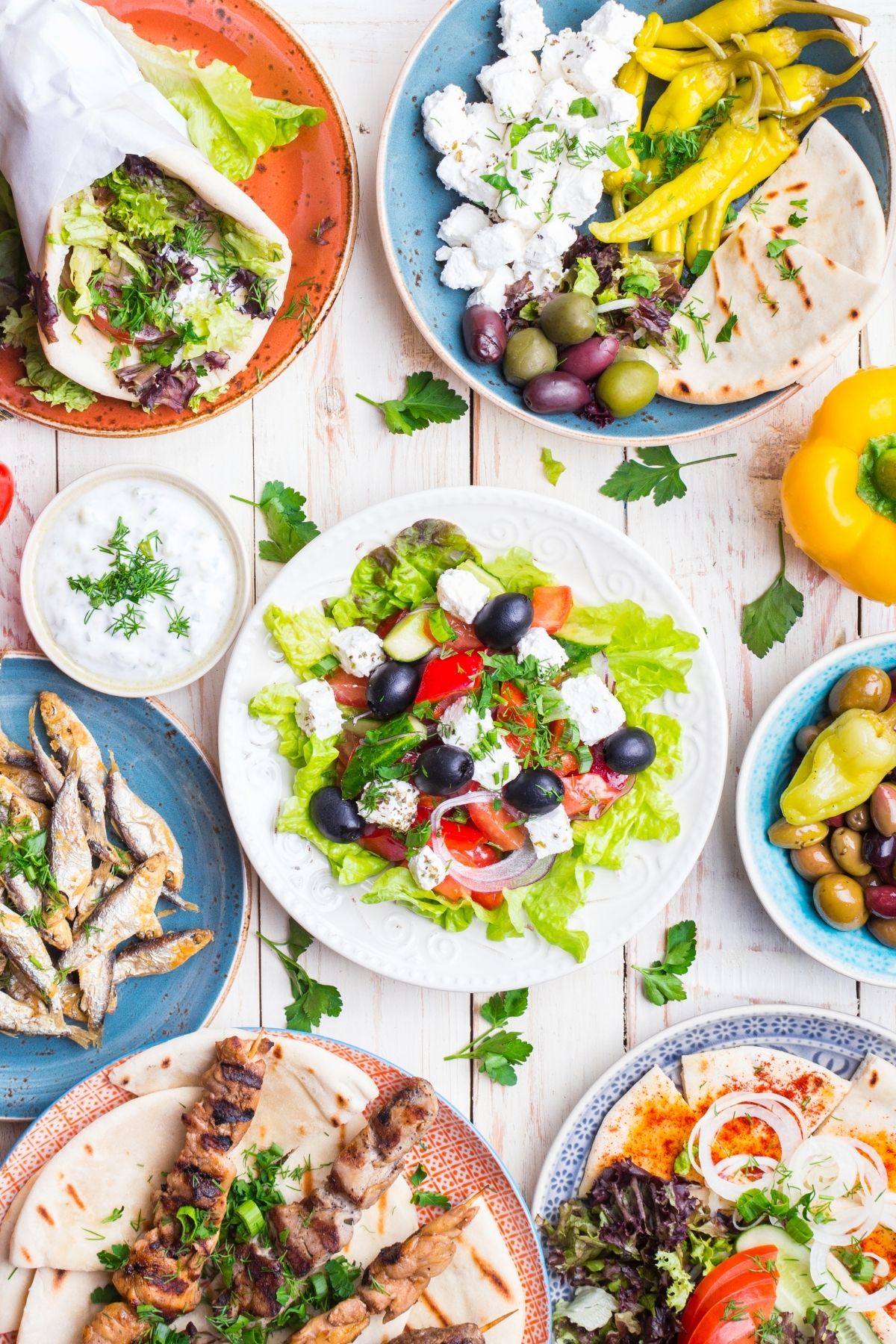
The Mediterranean diet contains lots of fish but little meat, with chicken maybe once a week and red meat as little as once per month.
Rich in beans and nuts, it is well known for its health benefits, with research showing how it can help prevent a range of conditions from cardiovascular disease to certain kinds of cancer.
Why it’s a good idea
Because it relies so little on meat and more heavily on plant-based foods, a Mediterranean diet is an environmentally-friendly option worth considering.
Experts studying dietary patterns compared the Mediterranean diet to the Spanish (Western-type) diet. They concluded that a switch to the Mediterranean diet would significantly reduce greenhouse gas emissions, land use, energy consumption, and water consumption.
A switch to a Western diet, on the other hand, would lead to an increase in all these markers.
More Tips for Sustainable Eating
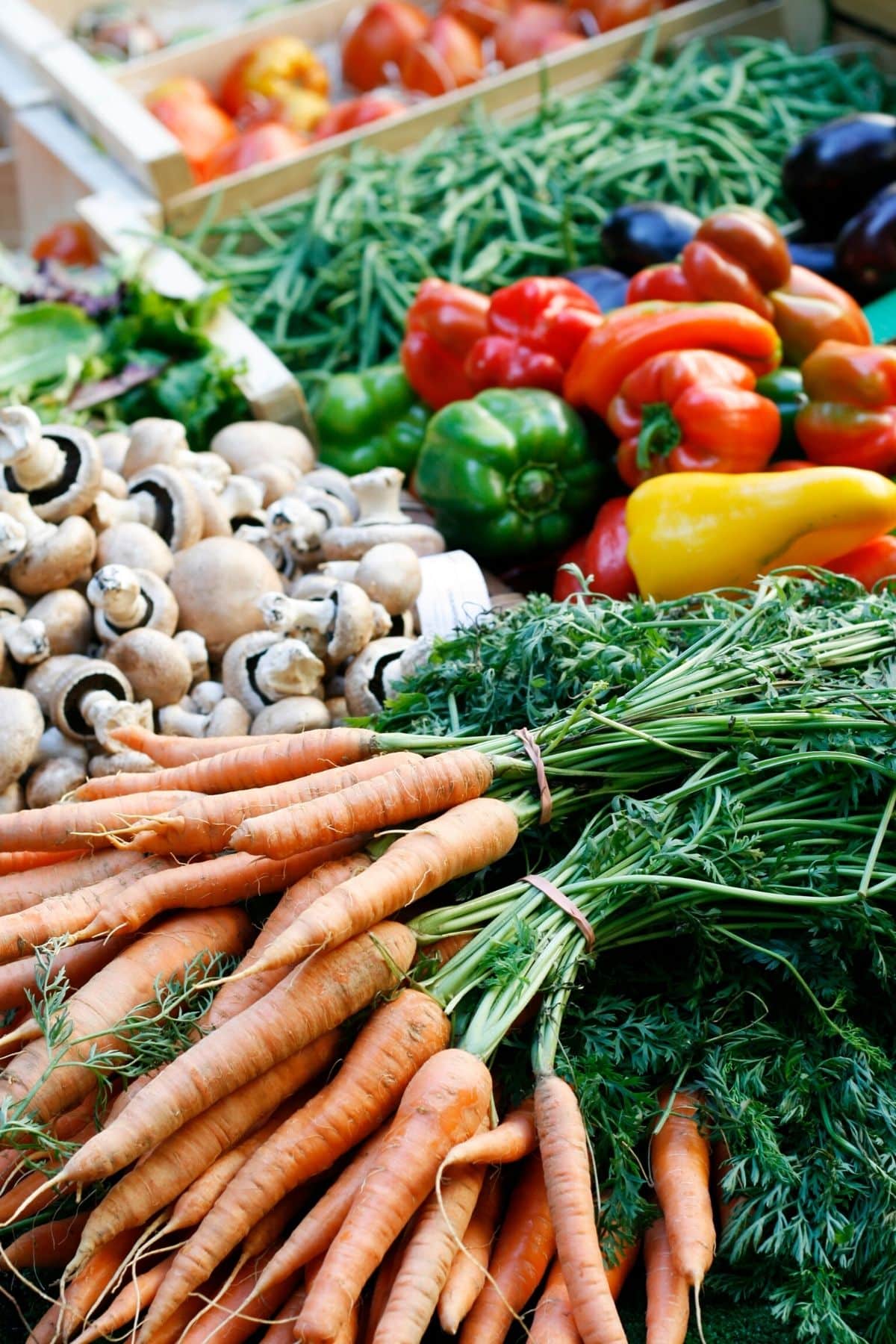
1. Reduce Food Waste
One of the biggest issues affecting the environment is waste. In fact, an estimated 30 to 40 percent of the food supply in America is wasted – a shocking figure.
Some of this waste takes place in the food production and distribution process – via spoilage, for example, or equipment failure.
But much is wasted at home, too, with households purchasing more food than they need then throwing it out when it spoils.
It’s important, then, to look carefully at just what you are consuming and buy only what you need. Find methods of using or preserving excess food rather than automatically discarding it.
2. Buy in Season
Another simple change you can make is to ensure that the fresh produce you buy is in season.
These days, technology has made it easy to buy most fruits and vegetables all year round. But this is at a cost, and the energy consumption involved in getting those times to your local stores is significant.
Buying locally and seasonally as much as possible helps reduce carbon emissions and air pollution – and it helps support the local economy too!
3. Consider Reducing Certain Foods
A “reducetarian” diet is a new way of looking at our eating patterns. Instead of completely giving up animal foods, try just reducing your consumption. As mentioned above, there are health risks to consider when going completely vegan.
The good news is that you don’t have to give up your meat, dairy, and eggs. Instead, try cutting back by one to a few servings a week. This is a totally acceptable and impactful way of making a difference.
You can keep tabs on your health by keeping a “symptom journal.” Note any increases or decreases in symptoms as you make adjustments in your consumption of animal products. You may get an added bonus of feeling better as a result!
FAQs
Regenerative farming that focuses on nourishing and replenishing the soil is likely the best for climate change.
That is the million dollar question! The key is figuring out what works best for your personal health, and then trying to do what’s best for the environment.
For example, if you eat meat, you can still choose grass-fed options and try to only buy what you need so you don’t waste any of it. If we all made even slightly more thoughtful choices, the climate would benefit.
Absolutely not! It is unrealistic to think that everyone can and should go vegan. But, it is conceivable that people can become more educated about thoughtful about their food choices.
For instance, I think we can all agree that factory farming is inhumane and disgusting. If we all knew about the horrors of factory farming and decided not to support that way of farming, then they would go out of existence.
More Helpful Nutrition Articles You Might Like
Conclusions
It almost seems hard to believe that changing the way you eat can help protect our environment. But the benefits of sustainable eating are huge – not just for our planet, but for our health too. I hope that this guide has shown you the small changes you can make that will bring big rewards to you, your family, and the world in which we live.
Don’t forget to join my newsletter list to get exclusive clean eating recipes and tips. The newsletter is 100% free with no spam; unsubscribe anytime.
About the Author: Carrie Forrest has a master’s degree in public health with a specialty in nutrition and is a certified holistic nutritionist. She is a top wellness and food blogger with over 5 million annual visitors to her site. Carrie has an incredible story of recovery from chronic illness and is passionate about helping other women transform their health. Send her a message through her contact form.
Note: this post is for informational purposes only and is not intended as medical advice. Please consult your healthcare provider for recommendations related to your individual situation.






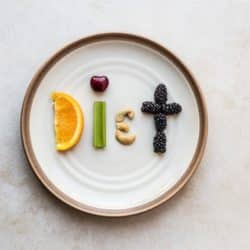














Veganism’s nutritional issues may be resolved through a vegan multivitamin. Some people might have allergies that make the diet impossible, but the vast majority of people who experience those nutritional deficiencies are experiencing them because they are not holding to a planned diet strictly enough (which is hard – I don’t do it). Fortunately, if people want both a large amount of versatility in their food (probably most people reading this blog) and veganism simultaneously then a multivitamin can stabilize their desire for food freedom.